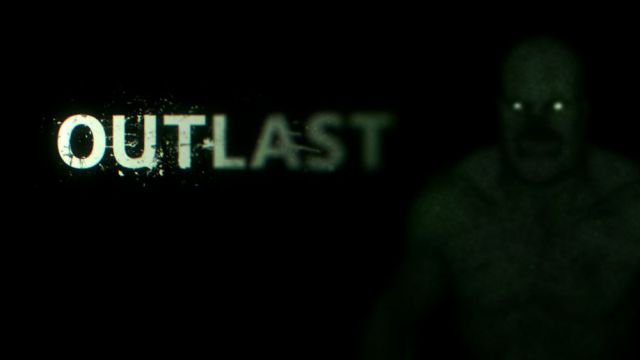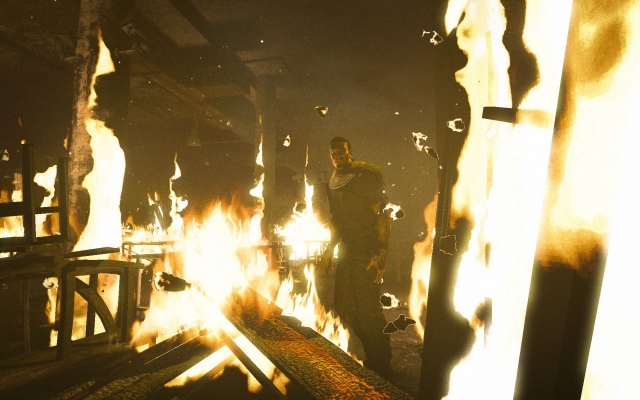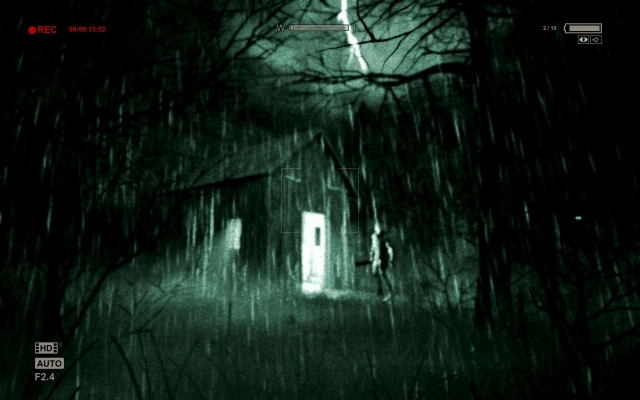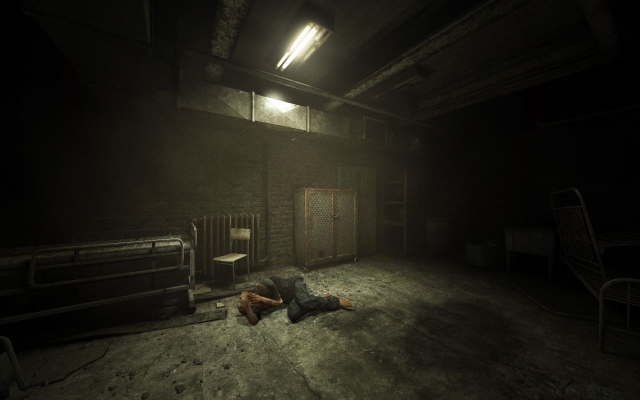Outlast

The Good: Genuinely scary, immersive experience. Beautifully awful environments.
The Bad: Absolutely linear – adventuring on rails. Lack of combat gets a little ridiculous at times.
The Ugly: Checkpoint save structure forces you to replay some parts over and over again.
Dilapidated insane asylums are scary. Unholy medical experiments are scary. Religious nutjobs are scary. The dark is scary. But as gamers we’re pretty much used to dealing with all of those things, plus fire breathing demons, the undead, and mutant space aliens. I’ll just pull out my BFG here… except that in Outlast, you don’t have a BFG, or any gun, or a knife, or club, or even a pointed stick. What you’ve got is your feet, and you’ll use them liberally to flee for your life, often, in Outlast, a new horror FPNS (First Person, Non-Shooter).
Before I began playing Outlast, even knowing more or less what the game was about, it was still a difficult game to envision. Sure, I said to myself, I’m in an asylum full of violent lunatics, I’m a reporter armed only with a camcorder, and my only solution to confrontation is run away and hide. But that didn’t give me a good idea of what the game would actually play like, so if you’re like me, let me try and give you a flavor of that now.
Like all FPS games, WASD and the mouse can be used for looking and moving around. You can jump (space) and crouch (ctrl) as well. The left mouse click is used to interact with absolutely everything, from picking up a battery for the camcorder to opening a door to collecting documents scattered around the asylum to climbing into a locker to hide. The right mouse click brings up your camcorder. In day mode, it somehow helps you notice subtle things, like letters three feet high written on a wall in blood. Seriously, that’s what it’s good for – when you see something like the aforementioned bloody lettering, you only take note of it if you activate the camcorder, and then you write something down about it (often something entirely obvious like, “Huh, I wonder what that word in blood means?”). In night mode the camcorder is far more useful in that it lets you see in the dark. It’s not however perfect in that it must emit light of its own, because if you try to sneak past someone in a dark room using the camcorder to maneuver, that doesn’t end well.
And by doesn’t end well, I mean that you will be discovered. That’s when you have to run away and hide. On the run, your footsteps echoing around you, the sound of your own breathing rasping in your ears, selecting lefts and rights almost at random as you try and recall what you know about the area you’re in, scrambling over or under barricades, clawing your way into air vents, climbing out windows to hang from ledges. It’s a frantic experience. Doing so in the dark while trying to navigate through the viewfinder of a camcorder with a night filter is a chaos of half glimpsed hallways and objects. Slamming doors in your wake (which doesn’t really work all that well because you have to stop and turn and look at the door and then left mouse click, instead of just barreling through and left clicking behind you) can buy you a little time because the enemies have to knock the doors down. But ultimately you’re going to have to find a place to hide – in a locker, under a bed, something like that. You then watch through the bed slats or the locker vent slots as your pursuer bursts in and blunders about the room a little, then usually gives up and goes away. If discovered in your hiding spot, they try to bash your head in with a pipe or a piece of chair – whatever they’re carrying. But while they’re very strong and fleet of foot, they’re not really dedicated to the bashing. They take a swing, and then give you plenty of time to run before swinging again. You can take maybe three or four hits, so getting discovered or cornered isn’t often nearly as fatal as you would think it would be. This can be almost comic as you run circles around your pursuer in a large room or pass them in a narrow hallway while they rain leisurely blows upon you.
Otherwise the game is pure FPS pabulum: switch flipping, knob turning, button pressing. Unlock this door, start that machine, find this keycard. Along the way you can collect the notes you take through your camcorder as well as patient dossiers, doctors’ notes, and newspaper clipping to unravel the horror of the asylum (or don’t – there doesn’t seem to be any penalty to just ignoring all the paperwork and experiencing the horror for horror’s sake). Your camcorder runs on batteries; you can find spares scattered around the asylum. Perhaps I was using the camcorder too sparingly, but in the whole game I never had a problem with running out of batteries. The game uses a periodic checkpoint save system, so if you are killed you restart at the last one. Like many games that take this approach, the save points may not be so well placed. Some save points are separated by nothing more than a stretch of hallway containing no opportunity for death. Others require a number of death-defying feats, meaning you may end up doing them a number of times before you survive. The first time that body on the floor you thought was dead attacks you is genuinely jump-out-of-your-seat frightening. The seventh time, not so much. This problem is exacerbated somewhat by the completely linear nature of the game. Though I can understand why it more or less had to be that way – they’re walking you through what amounts to a chain of scripted events – it doesn’t make doors that are locked up until you need them to be unlocked, at which moment they suddenly are unlocked, seem less artificial.
Outlast is maybe the hardest game I’ve ever had to review. It’s certain not to appeal to all gamers, and while I often personally use games to relax and blow off steam, I find that after playing an hour or so of Outlast I’m too wound up to play anymore. Good thing then that the whole game is about five hours long. Some would argue that it relies too heavily on the horror movie equivalent of the cat jumping out at you – cheap scares – and while perhaps that’s true, I found the timing to be excellent and it almost always got a jolt out of me. It’s intense, and exhausting, and immersive, and creepy as hell. Flaws? Sure, but the utter uniqueness of the experience allows me to overlook a few frustrations.
Reviewed By: Phil Soletsky
Publisher: Red Barrels
Rating: 85%
——————————————————————————–
This review is based on a digital copy of Outlast for the PC provided by Red Barrels.
 Game Over Online
Game Over Online











Whole game is cheap jumping scare tactics. More b-rated Hollywood horror movie than the tension building Jaws.
It’s only the third or forth door you open upon immediately entering the Asylum that features a corpse strewn up to the ceiling, waiving its arms around and screaming bloody murder through your headphones. Way over the top with gore. Heck, it’s remarkable when you find a room that isn’t dripping with blood from corner to corner.
Walking down a long hallway? Best be sure the lights will turn out or someone is going to dart past in the distance, complete with sudden piano crescendo.